Westgarthtown
100 Gardenia Road, Thomastown
Open: Second Sunday of each month from 1 to 4pm or by appointment.
(However see comment below about being able to wander around the
exterior on any day)
Admission: Adults $3, Children 50c
Related website:
Westgarthtown
This short article was first published as one of
Melbourne's Hidden Gems in the White Hat Melbourne Newsletter No. 472 on
14th January 2011
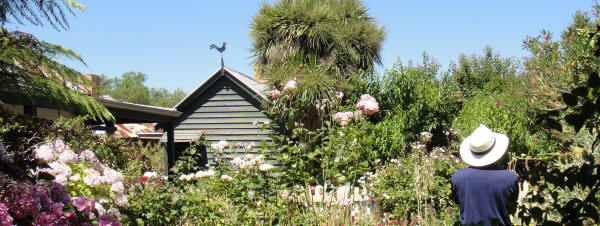
Many people feel you need to travel to country Victoria to
experience find atmospheric examples of pioneer life from the time of the
gold rush, but there are some fine examples hidden away in our sprawling
suburbs if you know where to look. One of our favourite examples is the
German settlement in Thomastown.
In the days before the gold rush a prominent Melbourne businessman and
politician became impressed with the qualities of German farmers and
tradesmen. The area later to be known as Germany was experiencing hard times
and many people on the land were looking to emigrate. The Melbourne
businessman was a contributor to charities all his life but, being a canny
Scottish Presbyterian, knew that a sovereign invested into the right
enterprises could soon generate 10 sovereigns for the little settlement of
Melbourne. He convinced the authorities to set up an assisted passage scheme
for a German settlement for which he would also put his hand in his own
pocket for a substantial amount. After all, if you were looking for a
Protestant work ethic, who better to look to than a bunch of German
Lutherans. Thus the little German town was set up to the north of Melbourne.
When the Germans arrived they found land that would have discouraged many
others. It was strewn with boulders and stones of the most intractable type.
But Germans and bluestone are a good combination. Building your farmhouse
and outbuildings from bluestone might be long and backbreaking work but if
you did it properly you wouldn�t need to do it again for a long time. In
fact the farmhouse that the Ziebell family built is still in wonderful
condition and housed their descendents without external power, water or
sewerage until the 1970s.
When you come to build a church, then bluestone is again the obvious
choice. Nothing fancy mind you � none of these papist baubles. However they
allowed themselves the indulgence of three small coloured panes of glass in
the window above the doorway. Do it simple, do it well, and do it with a
craftsmanship that will stand the test of time. While many more ostentatious
churches in Melbourne�s suburbs have fallen into decay, Lutheran services
are still held in the little German chapel.
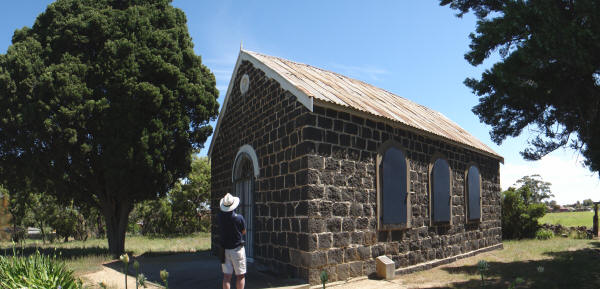
And, inevitably, every such a settlement will need a graveyard. The
Lutheran Cemetery contains burials from the earliest times of the settlement
through to the present day. If you visit, see if you can find the only
remaining wooden gravestone (Is it a gravestone if it is made of wood?).
Also keep an eye out for Mimi the cat who is a regular visitor.
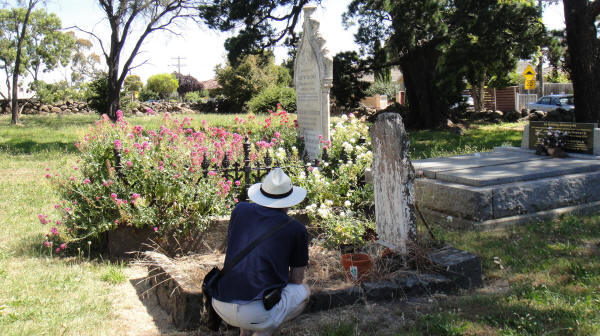
The farmhouse, outbuildings, a good portion of the farmland, the chapel,
the graveyard and the original drystone walls all sit in the middle of
downtown Thomastown � if you know where to look. It is a short walk from the
railway station and an appropriate destination for the adventurous cyclist.
The interior of the farmhouse is open once a month and there are occasional
tours.
However, if you are on holiday, we would recommend a visit during the
week. The interior of the house won�t be open but you are likely to have the
whole area to yourselves and your thoughts without intrusive guides and
displays telling you what to think and hiding away the things they don�t
think people should be interested in. The family can have a picnic in the
manicured farmhouse garden. Dad can prod at the machinery and figure out how
it worked, mum can ponder the domestics of the dairy and the daily chores,
older daughter can retire to the delightful garden at the front of the house
overflowing with Victorian era flowers and read her Jane Austen book,
teenage son can head off and take photographs of the cemetery and younger
teenage daughter can pout because she doesn�t want to be there � but then
again she doesn�t want to be anywhere her parents are.
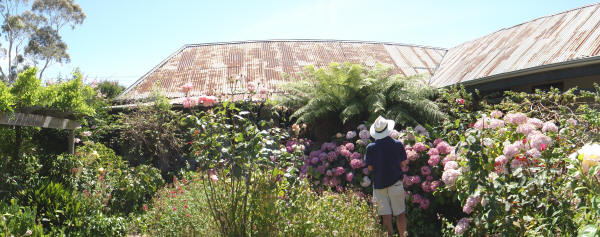
By the way, the businessman and politician who convinced the
authorities to foster this German settlement also donated money of his own
towards the scheme. His name was William Westgarth, and the German village
(as well as a later Melbourne suburb) was named after him.
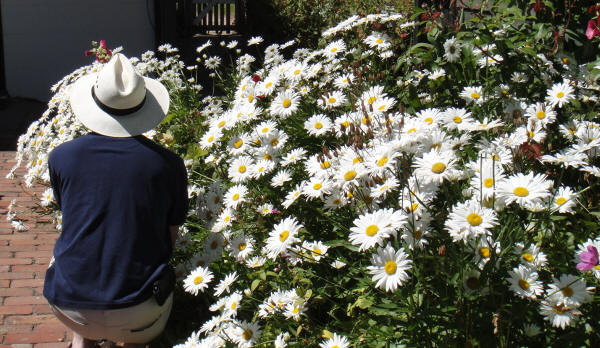
___________________
 ___________________
___________________